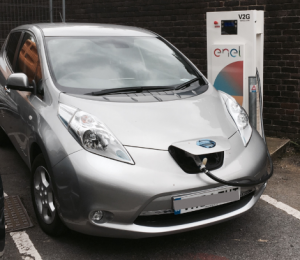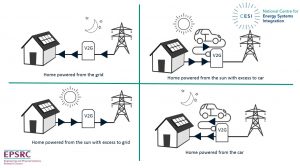About the Author
Professor Phil Taylor
BEng EngD CEng SMIEEE FIET FHEA
Director, EPSRC National Centre for Energy Systems Integration
Siemens Professor of Energy Systems
Deputy Pro Vice Chancellor of SAgE Faculty
Head of the School of Engineering
Newcastle University

Faraday Challenge
The launch of the Faraday Challenge is a welcome and hugely exciting piece of governmental leadership which has the potential to transform the automotive sector and have a significant impact on the UK’s energy system and air quality.
Battery costs have been falling and performance levels have been improving significantly in the last few years. However, fundamental research and development challenges remain which the UK is uniquely positioned to address. These challenges require multi-disciplinary expertise ranging from fundamental material science to systems integration, ICT and intelligent control systems development.
 The North East of England, the home of Nissan Manufacturing UK, has a huge amount to offer and benefit from this automotive and energy system revolution. The potential breakthroughs in this area open up the possibility for people to see their car as much more than just a means of getting from A to B; it will allow families to become active participants in a future energy system which is low carbon, secure, equitable and affordable for all.
The North East of England, the home of Nissan Manufacturing UK, has a huge amount to offer and benefit from this automotive and energy system revolution. The potential breakthroughs in this area open up the possibility for people to see their car as much more than just a means of getting from A to B; it will allow families to become active participants in a future energy system which is low carbon, secure, equitable and affordable for all.
One such solution, a vehicle-to-grid system (V2G), can allow two-way flow of power and energy from an electric vehicle to the electricity grid or to a home. This opens up an array of innovative opportunities. The battery within the electric vehicle can provide energy to the home in times of high demand. It can also provide an energy storage solution. For example, when a household’s roof-top solar photovoltaic system (solar panels) is generating more electricity than the home needs, the excess can be diverted to the car parked in the driveway. And the V2G electric vehicle can provide a valuable service to the local electricity distribution network providing power or storage to the network to support local power demand challenges. Newcastle University, carry out world class multi-disciplinary research in this space[i] and host one of the only UK V2G units outside of Nissan research facility[ii].

Newcastle University is also the leading partner in the multidisciplinary consortium team of the EPSRC National Centre for Energy Systems Integration. They are currently also setting up the new EPSRC Supergen Energy Networks Hub. This academic research is highly collaborative and is being co-created with industry including key stakeholders such as Nissan, Northern Powergrid and Siemens. This industrial input ensures that the research is relevant, useful and therefore providing solutions to real problems in the energy system within the UK. This innovation development through to implementation with our industrial partners translates directly to jobs, productivity improvements and new markets regionally, nationally and internationally.
On a final note, an integrated energy approach is required to take full advantage of wealth of readily available renewable energy resources such as wind, solar and wave energy[iii] to fuel the UK. It has been said that energy storage is the final piece of the low carbon energy puzzle. The Faraday Challenge provides the basis for the UK academic and industrial sector to work together to solve the puzzle and thus provide meaningful societal benefits for many years to come.
References
[i] Neaimeh M, Wardle R, Jenkins A, Hill GA, Lyons P, Yi J, Huebner Y, Blythe PT, Taylor P. A probabilistic approach to combining smart meter and electric vehicle charging data to investigate distribution network impacts. Applied Energy 2015, 157, 688-698.
[ii] http://www.ncl.ac.uk/press/news/2017/01/v2g/
[iii] Roskilly AP, Taylor PC, Yan J. Energy storage systems for a low carbon future – in need of an integrated approach. Applied Energy 2015, 137, 463-466.